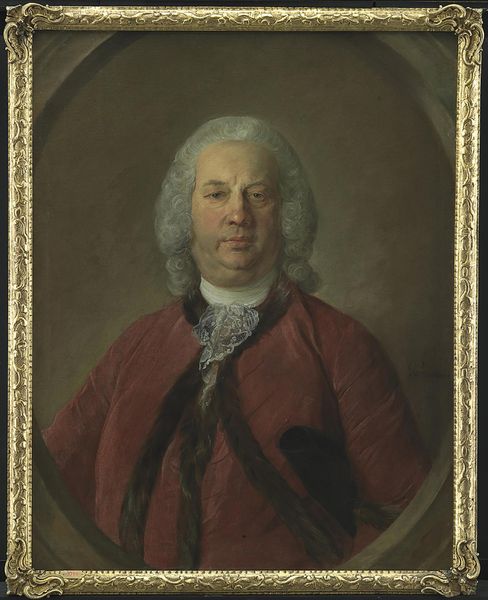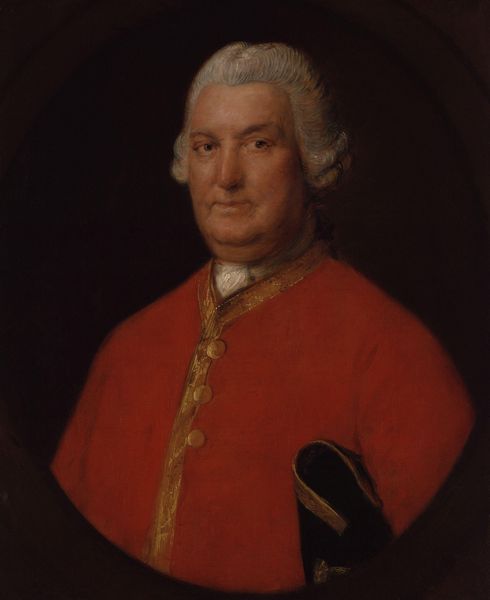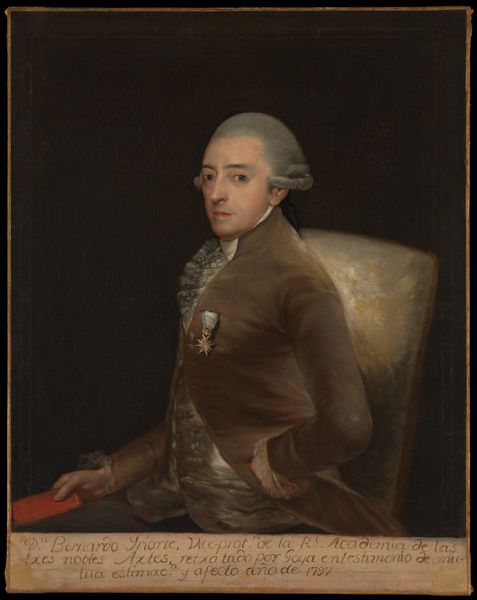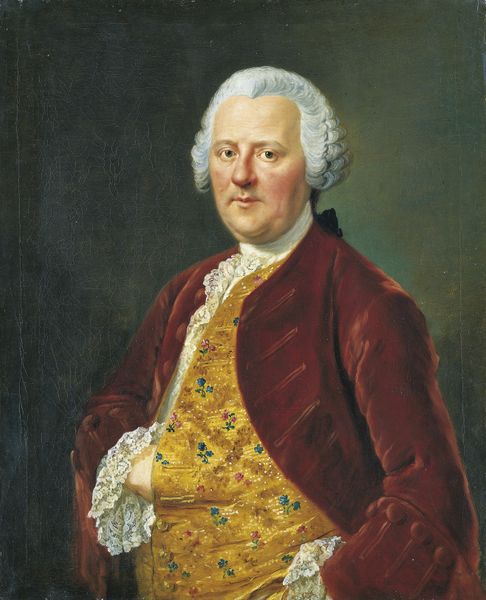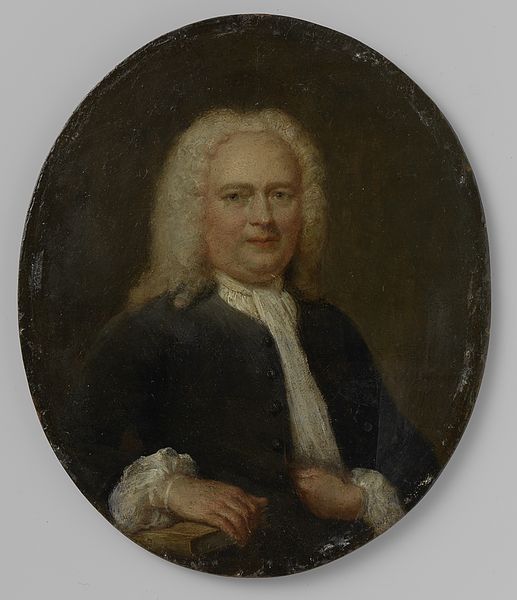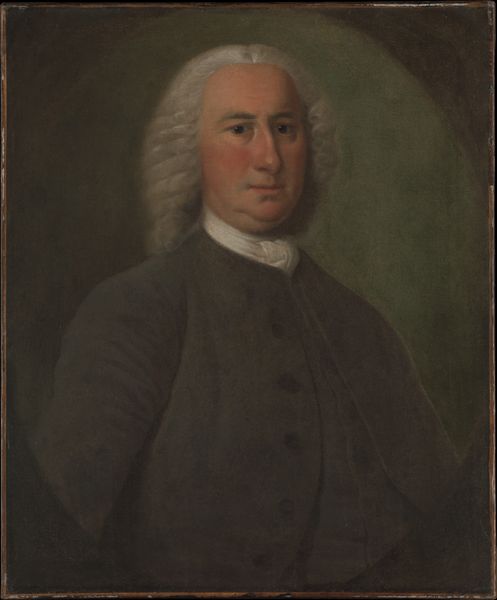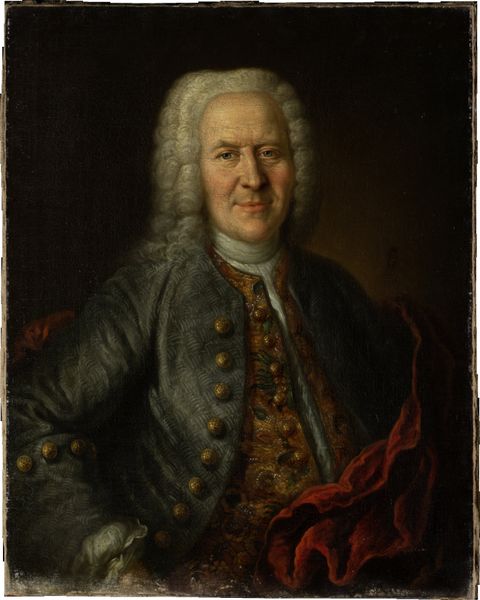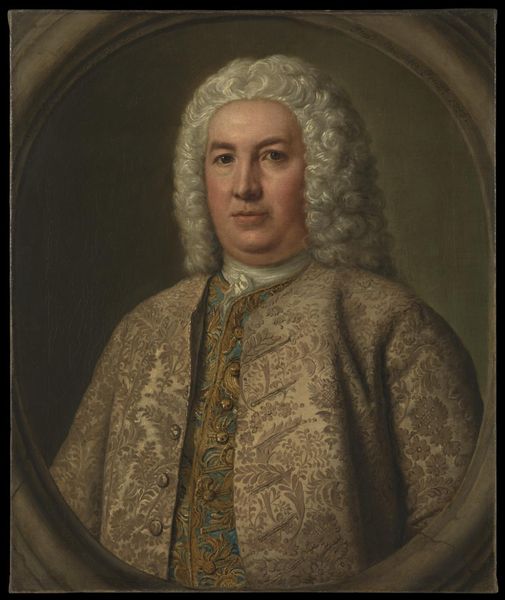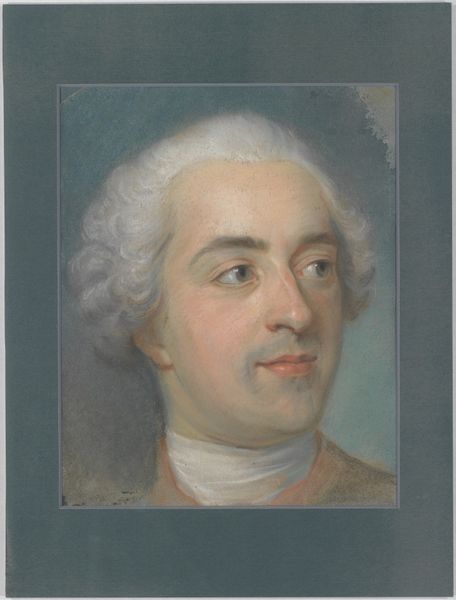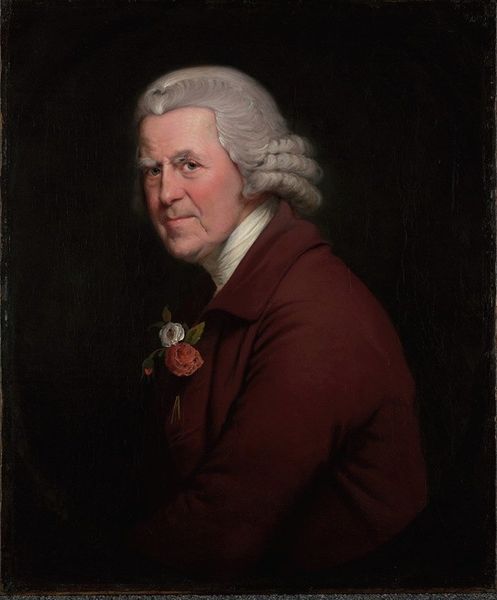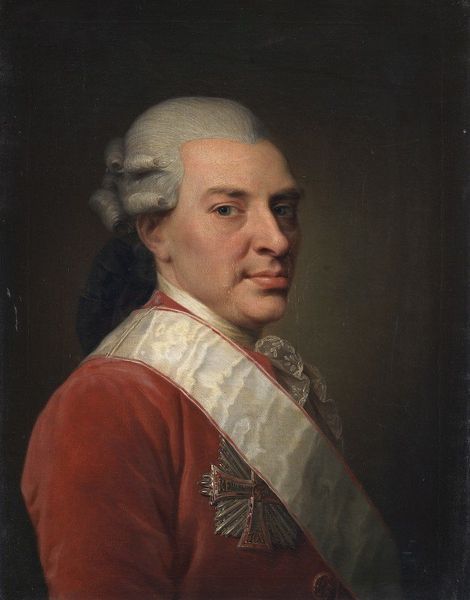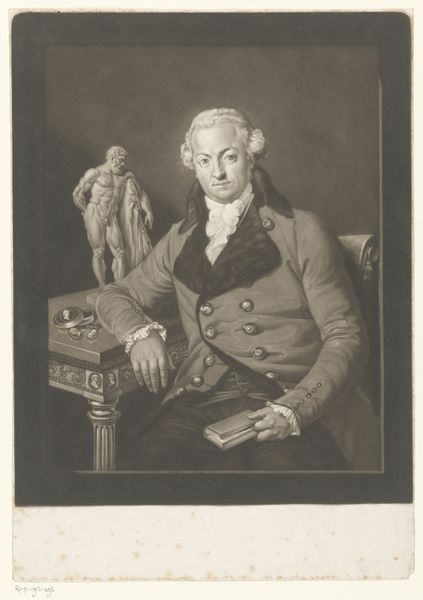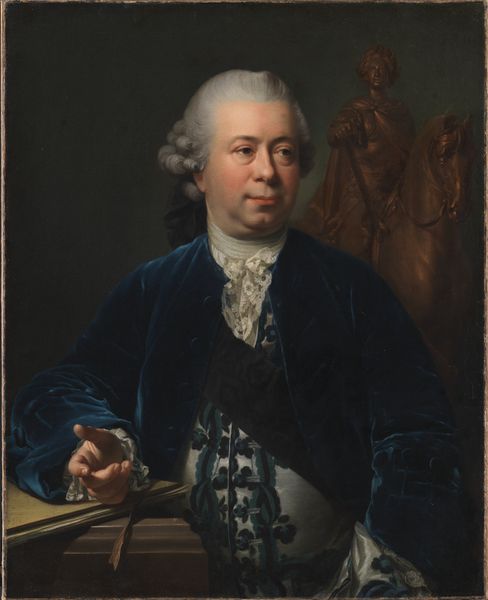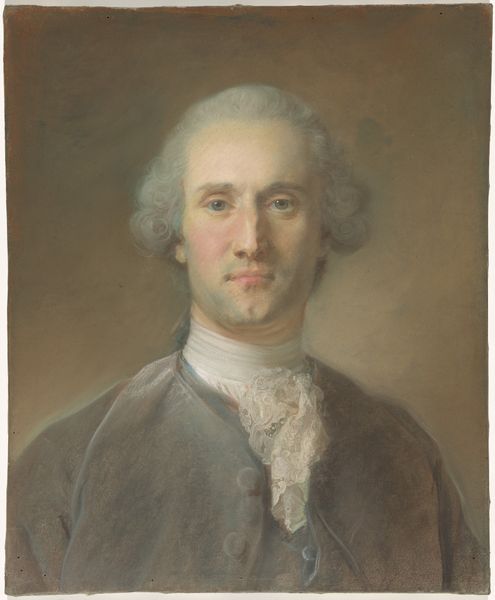
oil-paint
#
portrait
#
baroque
#
portrait
#
oil-paint
#
academic-art
#
realism
Dimensions: 22 x 17 1/2 in. (55.9 x 44.5 cm)
Copyright: Public Domain
Curator: Take a look at this, will you? "Portrait of a Man," painted sometime between 1742 and 1770. It's oil on canvas, and the artist? Well, that remains a delightful mystery—anonymous. What strikes you first? Editor: The red. It practically jumps out. I immediately want to know: who *was* this man so bold as to demand this arresting shade? And what did the red signify? A particular rank? A radical politics? It feels performative. Curator: Yes, that vibrant red is something, isn't it? A flash against the subdued backdrop. To me, though, it's his expression that holds my gaze. A kind of gentle watchfulness... a hint of amusement, perhaps? What's he seen, I wonder? I imagine his stories... the wine-soaked whispers and laughter… perhaps the lamentations too. He's definitely seen some things. Editor: Mmhmm. It's interesting you frame his expression as 'gentle watchfulness'. To me, the slight upward tilt of the lip also suggests a self-satisfaction that must be understood within a framework of wealth and privilege. What power dynamics were in play during the commission of this portrait? Curator: You know, it could just be a well-placed dimple catching the light, but yes, I see your point about potential arrogance. I'm just intrigued. What were his joys, what were his griefs, did he love well… all projected from his portrait? But, you're right, our perspectives on art and on other people are shaped by experience and prejudice. So many silent witnesses. Editor: Agreed. And beyond the character study, even the red could indicate so much more if contextualized properly. Trade routes, material costs and social stratification that underpinned this person’s existence. Everything is deeply interconnected. Curator: Absolutely. Art acts as an excellent prompt in historical reconstruction and I must confess that, while I remain romantically drawn to speculation about the individual in the image, I’ve been won over by the fascinating context to which you alert me. Thanks for shedding a new light on the sitter and his flamboyant, or perhaps not so flamboyant, choice of coat! Editor: Indeed, context shifts perception. Thinking critically about the context encourages the move from individual aesthetic interpretation to sociohistorical understandings of both past and present worlds. It’s a fascinating thing.
Comments
No comments
Be the first to comment and join the conversation on the ultimate creative platform.
